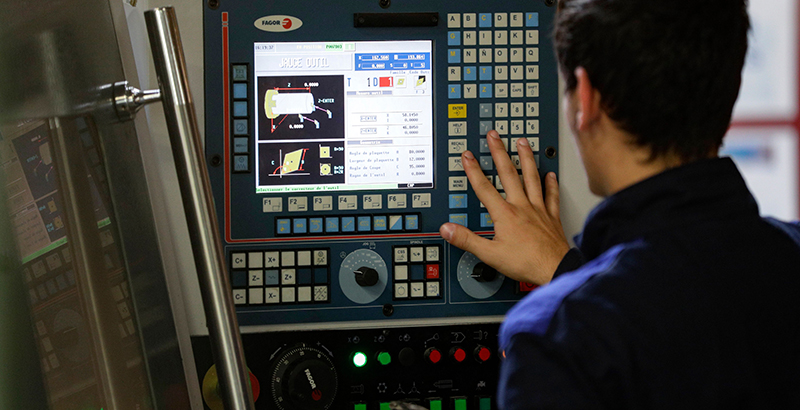Analysis: Are Los Angeles High School Students Ready for Tomorrow’s Job Market?

Southern California’s job market is hot right now. But unless something changes, many Los Angeles-area high school students won’t be ready for it when they graduate — especially if they don’t go on to earn a bachelor’s degree — which many of them won’t.
For as long as anyone can remember, American high schools have mostly failed to provide their students with genuinely marketable skills. But it doesn’t have to be that way. And in recent years, a growing number of “career and technical education” (CTE) programs have sought to bridge the gap between what students learn and what local labor markets demand.
In a new study, we took a closer look at that gap by examining the relationship between the kinds of CTE courses high school students take and the kinds of jobs that will likely be available to them — national and locally – when they finish their education.
Nationally, we found that approximately half of the jobs that currently exist are in four big fields: Business Management & Administration (18 percent), Hospitality & Tourism (13 percent), Marketing (12 percent), and Manufacturing (9 percent). Yet only one of these fields — Business Management & Administration — sees significant course-taking in high school. Worse, most students appear to be dabbling—taking electives across various fields instead of “concentrating” by taking three or more courses in the same field, which prior research suggests improves their odds of success in college and the workplace.
The picture looks somewhat different when we examine Los Angeles specifically. For example, compared to their peers in the rest of the U.S., kids in Los Angeles take about 50 percent more courses in “Arts, Audio-Visual Technology and Communications” — no huge surprise, given the number of aspiring screenwriters and music executives in the area — but comparatively fewer courses in Information Technology and Business Management & Administration.
Yet, in other ways, the local picture is not so different from the national picture. For example, of the four big fields that support over half of Los Angeles-area jobs — Marketing; Manufacturing; Hospitality & Tourism; and Business Management & Administration — only one (Business Management and Administration) sees significant CTE course-taking at the high school level. And none has a local concentration rate that exceeds 1 percent.
In fact, L.A. students are unlikely to concentrate in any of the sixteen fields we analyzed. And when they do concentrate, it’s often in fields that don’t support that many jobs. For example, the STEM and Arts, A/V Technology & Communications fields account for nearly half of local CTE concentrations, but just 4.4 percent of local employment.
In our view, these results highlight the enormous potential for greater alignment between what L.A. kids take in high school and what the local employers will be looking for when they graduate. Simply put, despite the current enthusiasm for career-oriented education, very few young Angelinos are actually experiencing it in any meaningful way. So it’s critical that the local business and education communities join hands to point more students in fruitful directions.
In a recent interview, Los Angeles Mayor Eric Garcetti argued that the city’s biggest challenge is addressing “a huge shortage of skilled labor.”
He’s right, of course. Today’s boom won’t last forever. And regardless of who makes varsity, or gets asked to prom, or is voted “most likely to succeed,” tomorrow will be here before L.A. students know it.
Cameron Sublett (Pepperdine University) and David Griffith (Thomas B. Fordham Institute) are co-authors of a new report, “How Aligned is Career and Technical Education to Local Labor Markets?”
Get stories like these delivered straight to your inbox. Sign up for The 74 Newsletter

;)